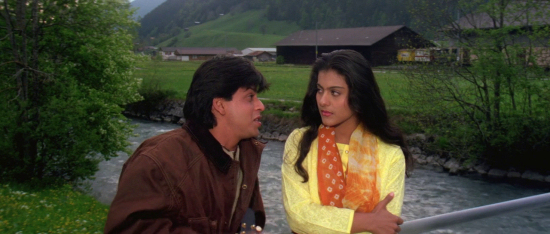Who's on the cutting edge of German rap? My German friend, Ada, tells me it's Haiyti. I can't find her lyrics online even in German to translate but she is pleasantly hypnotic to watch and listen to. Ada tells me Haiyti and several other artists she's exposed me to rap in a style called "South" that apparently originated in the U.S. I've never heard of it--it's fascinating to me what one culture finds interesting about another. Who knows if we'd even think of films noir as we do to-day if French critics hadn't spotted this distinct American form of storytelling?
Cultural appropriation is getting a bad reputation these days. So now I'd like to take an opportunity to do something I've been thinking about for a while and list some of my favourite examples of cultural appropriation.

Night of the Living Dead
Most people don't realise the zombie originated in Haitian Vodun. Earlier zombie films like White Zombie and I Walked with a Zombie made this clear but Night of the Living Dead is generally thought to be the movie that brought the ravenous, mildless, walking corpse to great fame. As a storytelling device it's remarkably versatile, from the indictment of shallow media in David Cronenberg's Rabid to its use in created the dystopian Western on The Walking Dead. In Night of the Living Dead, as in The Walking Dead, the monster prompts arguments about actions necessary for survival and the moral uncertainty involved, the film's story obviously influenced by the Vietnam war.
The Rolling Stones
People used to ask why British rock stars sang with American accents. The typical reply was that the artform was born in the U.S. and it was considered the proper style. But there was also an unmistakable fascination with American culture, particularly southern American culture, in British rock of the 50s, 60s, and 70s. The influence of American artists like Chuck Berry, Muddy Waters, and Bob Dylan are abundantly clear in the works of The Beatles, Led Zeppelin, and The Rolling Stones. Perhaps no-one more than the Stones, though, attempted to so thoroughly create an American atmosphere both musically and lyrically, from the understated use of bourbon in "Dear Doctor" to outright invocation of the American bar scene in "Honky Tonk Women".
Parsifal
Like many elements of the Arthur legends, Sir Percival has a complicated history with aspects of his story coming from various origins. Richard Wagner, according to Wikipedia, apparently thought the name was of Persian origin. But Arthur was an English king from before the Norman conquest and it was on English cultural history Wagner primarily drew in writing his most musically sublime opera.

Ponyo
Japan is one of the greatest cultural appropriators in the world. Many people are troubled by associations with U.S. occupation following World War II but western cultural influences were evident in the country long before the war as the long history of baseball in Japan makes clear. I could pick from many wonderful examples of Japanese films that drew on foreign cultural influence, I could pick from many anime films, I could pick from several Hayao Miyazaki films. Howl's Moving Castle may be a more obvious choice but to segue from Wagner I've chosen Ponyo. This story of a tiny fish girl was influenced by Hans Christian Anderson's The Little Mermaid but its story of a godlike father's relationship to his rebellious daughter was inspired by Wagner's Die Walkure, a fact underscored by the music of Ponyo's unabashed imitation of Wagner's famous "Ride of the Valkyries". In borrowing from this particular opera, Miyazaki is also indirectly borrowing from the stories of Odin and Brunnhilde that influenced Wagner.

The Thief of Bagdad (1940)
I doubt anyone in this movie had ever spent much time in Baghdad. A mixture of stories from A Thousand and One Nights, the film reflects a fairy tale version of Baghdad that developed in the British imagination over the 18th and 19th centuries from various translations of the tales. The stories themselves have various origins from Egypt, Syria, Persia, and India, making the Indian actor Sabu appropriately cast for those who adopt the hopeless role of being sticklers about that sort of thing. Sabu delivers an excellent performance in the film as an earnest and adventurous child. Martin Scorsese has called him his favourite actor from the period. Every bit as good, though, is German actor Conrad Veidt as one of the great, subtly complex screen villains of all time, Jaffar.

Bollywood
The very name is a riff on Hollywood, Bollywood movies, like Dilwale Dulhania Le Jayenge (pictured) or Swades often are partly set in Europe or the United States. This is partly a reflection of the Indian diaspora as populations originating in India are growing around the world. Stylistically, the films are heavily influenced by Hollywood musicals of the 1930s and 40s though films have been made in India for nearly as long.

The Good, the Bad, and the Ugly
A Mexican friend of mine remarked that her two favourite Mexican characters in the history of film were played by white people--Jenette Goldstein as Vasquez in Aliens and Eli Wallach as the bandit Tuco in The Good, the Bad, and the Ugly. Director Sergio Leone identified more with the bombastic yet ordinary man than with the larger than life characters played by Clint Eastwood and Lee Van Cleef. Everyone's fighting for treasure, for the most part, but you get the feeling Tuco's the only one who'd know how to have a really good time with it. Of course, this is a film made primarily by Italians in Spain about the U.S. so there are many layers of cultural appropriation here. The cinematic wheel turned and many aspects of the films called "Spaghetti Western" vastly improved on the originally American genre so much that every Western made in the U.S. since has been in some way influenced by Spaghetti Westerns.

No comments:
Post a Comment